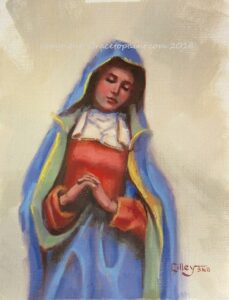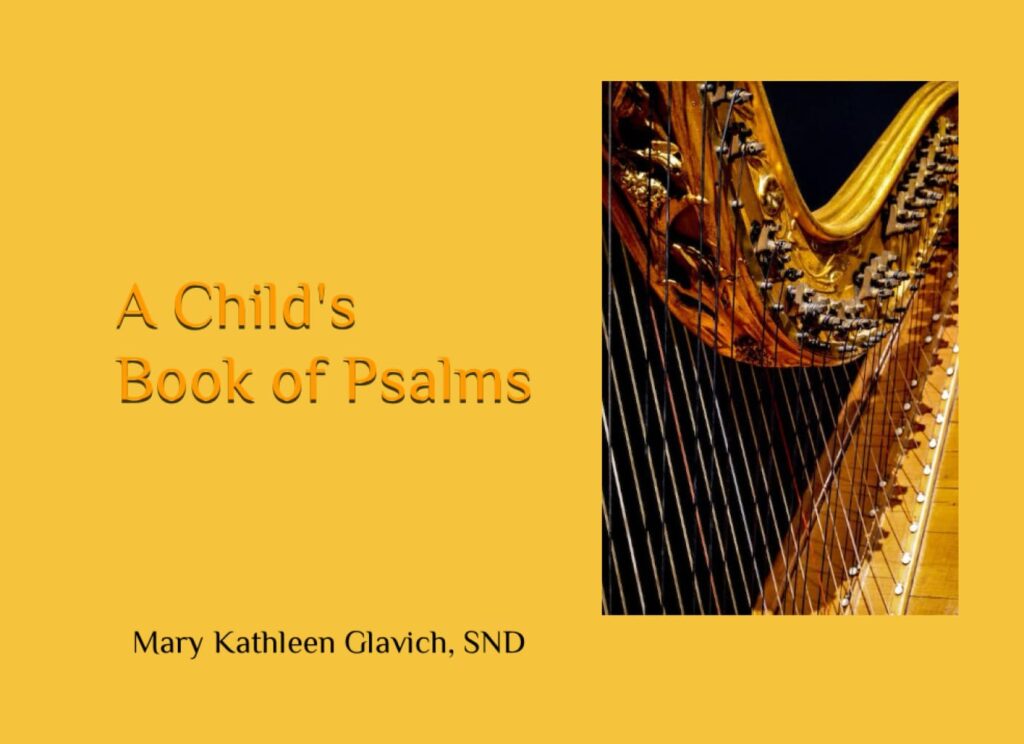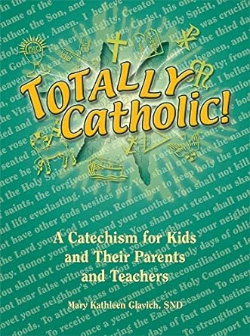
On the feast of the Assumption, the Gospel was the Visitation. I thought it fitting to share the reflection I wrote for our SND Associates this year:
Imagine suddenly becoming pregnant with the Messiah, the Savior of the World. What would you do afterwards? Any ordinary woman would probably seal herself in the house, taking care that nothing would endanger her or the miracle baby growing within her. But Mary, the Blessed Virgin, was no ordinary woman. She dared to venture out on an errand of mercy. When the Angel Gabriel delivered God’s message to Mary that she was the woman chosen to be the Mother of God, he had a postscript. Her cousin Elizabeth, who was childless and too old to conceive now, was also miraculously pregnant. Why did God reveal this to Mary? Because God knew he could depend on her to respond to someone in need. And she did. Mary’s compassionate heart impelled her to be with Elizabeth during her last three months of pregnancy. In fact, the Gospel specifies that Mary went to help Elizabeth “in haste.”
Mary knew the Shema, the Jewish prayer recited twice a day: “Hear, O Israel: The LORD is our God, the LORD alone. You shall love the LORD your God with all your heart, and with all your soul, and with all your might.” Jesus identified this as the greatest commandment. It describes how deeply Mary loved God—with her whole being. For love of God, she surrendered herself to him and let him use her to become a human being. By doing this, she risked her life for God because according to Jewish law, an unwed mother was to be stoned to death. Mary also risked her life by following the second greatest commandment: Love your neighbor as yourself.
Mary also showed her love for God by loving others—with an active love. Mary decided to travel to Elizabeth, who lived in village of Ain Karem near Jerusalem. Making the three-day journey was a challenge. First, Mary, who was about fourteen years old, had to persuade her mom and dad and, of course, Joseph to let her go. Ain Karem was about ninety miles south of Nazareth in the hill country. Mary probably walked much of the way. Today in Ain Karem the church that commemorates the Visitation stands on a hill. Pilgrims find it a difficult climb up the rocky, dusty road with the hot Mideast sun beating down on them. Consider, too, that Mary made this journey when she was pregnant and perhaps experiencing morning sickness. To add to the danger and discomfort, there was the constant threat of bandits swooping down on the caravan. Moreover, the overnight accommodations were a far cry from today’s hotels.
But Mary was a gutsy young lady. With holy boldness she undertook the trip. Why? Because Mary was motivated by love. She thought of others more than herself. Her son would be the same way. Selfless.
The Arrival
Somehow Mary located the house of Zechariah and Elizabeth. She walked through door and greeted Elizabeth. Since there were no cell phones or e-mail, this most likely was a surprise visit. Elizabeth was startled to hear Mary’s voice. And the boy she was carrying in her womb leapt at the sound. He was the future John the Baptist, the prophet who would baptize Mary’s son, preach to prepare the people for him, and be beheaded for calling a king to repent. Elizabeth, inspired by the Holy Spirit, greeted Mary, “Most blessed are you among women, and blessed is the fruit of your womb.” And she asked, “How is it that the mother of my Lord should come to me?” With this, Elizabeth became the first to acknowledge Mary as the Mother of God. Then Elizabeth praised her young relative by saying, “Blessed are you who believed that what was spoken to you by the Lord would be fulfilled.” Mary is blessed because of her faith. She is the most faithful disciple.
Mary’s Song of Salvation
The Magnificat that the evangelist Luke put on Mary’s lips that day is a canticle woven with verses and themes from the Old Testament. The first four verses are a burst of praise of God in which Mary extols the Lord for what he did for her. She again declares herself his handmaid. She frankly prophesies that all ages will call her blessed, but humbly acknowledges that all her graces were gifts from God.
The rest of the prayer delineates God’s mercy to believers in radical terms: God brings down the proud and mighty, feeds the hungry, and raises the poor and lowly. In conclusion, Mary recalls God’s mercy to her people, the descendants of Abraham. As Mary sings this canticle, she represents her people Israel who longed for freedom. She also sings for the Church who longs for the reign of God—a reign of justice and peace.
The Magnificat praises God for liberating people. The brave young woman who sang this victory song was herself instrumental in freeing humanity and ushering in God’s kingdom. Later Jesus described his mission in words that mirror the Magnificat: “He has anointed me to bring good news to the poor. He has sent me to proclaim release to the captives and recovery of sight to the blind, to let the oppressed go free” (Luke 4:18). Both Mary and her son stand shoulder to shoulder with those who work for freedom and justice for all.
The Stay
During the three months Mary lived with Elizabeth, she helped with the household chores: going to the market, fetching water from the well, doing laundry, and baking bread. She also served as a companion to Elizabeth, whose husband was temporarily mute! Undoubtedly, as the two women sewed baby clothes, they shared their joy as well as their concerns about bearing a child. They also planned how they would raise their sons. Probably Mary was present for John’s birth and even assisted at it. Her return home was even more arduous than her journey to Ain Karem, for now she was three months pregnant.
In the Visitation, Mary brought Christ to others. She was a Christopher, a Christ-bearer. She not only brought Jesus physically, but she brought Christlike mercy and love to her extended family. St. Catherine of Siena called Mary “the chariot of fire.” This fire is the burning love of God.
Mary performed a loving deed again at a wedding in Cana. She was the one who noticed that the wine ran out and did something about it. Her action protected the newlyweds and their parents from shame and from bitter memories of the celebration. Ever sensitive to others’ pain, Mary sees a need and fills it.
Mary’s “Visitation” to Us
Today Mary loves us, the brothers and sisters of Jesus. St. John Vianney said that if the love of all the mothers in the world were put together, compared to Mary’s love for us, it would be as ice. Mary is anxious that we stay close to her son and after we die, to live forever with the two of them. In heaven now, Mary is not eternally resting. Rather, she’s at work for us, caring for us. Mary has appeared in countries all over the globe. In the 20th century there were 386 apparitions reported. Mary’s messages have been the same: pray, do penance, and repent.
Right now Mary is interceding for us. There is a saying, “To Jesus through Mary.” There is another saying “All for Jesus through Mary.” Sisters of Notre Dame have it inscribed inside their rings. In the Morning Offering we pray, “O Jesus, through the Immaculate Heart of Mary I offer you my prayers, works, joys, and sufferings of this day.” And whenever we pray the Hail Mary, we ask her to pray for us.
A story illustrates that Mary has a heart for us sinners. In heaven one day Jesus meets Peter, who is in charge of the heavenly gates, and scolds, “Why are there so many sinners in heaven? I told you to close the gates on them.” Peter replies, “I did shut the gates to keep them out, but your mother opened the windows and let them in.” Of course, this is just fanciful. Jesus loves sinners as much as his mother does.
Reflecting on the Visitation, we see that our mother, Mary, teaches us to listen to God’s prompts to act with love and to show holy boldness in performing them. How wonderful if someday Mary’s son meets us at heaven’s gates and says, “Welcome! Come right in. You remind me so much of my mother.”
(Based in part on The Catholic Companion to Mary by Mary Kathleen Glavich, SND)
What aspect of Mary’s life is most meaningful to you?








One Response
Such a fine article, making our Mother and God’s Mother so real and so human. Thank you, Sister Kathleen.